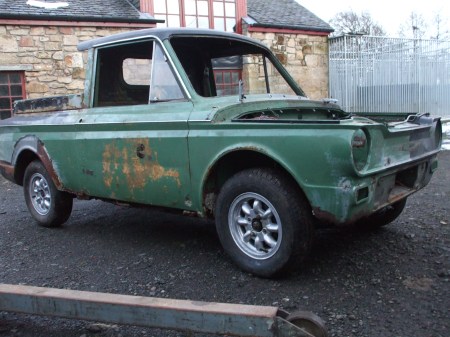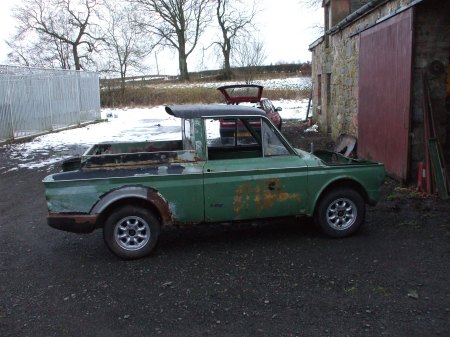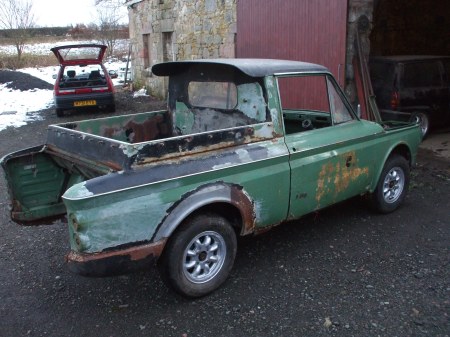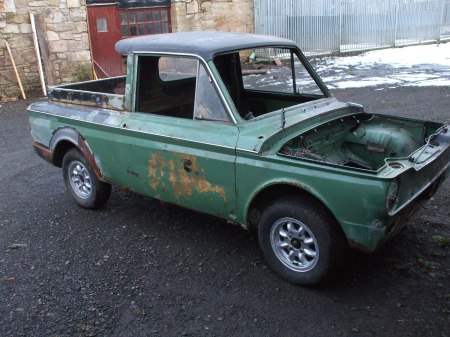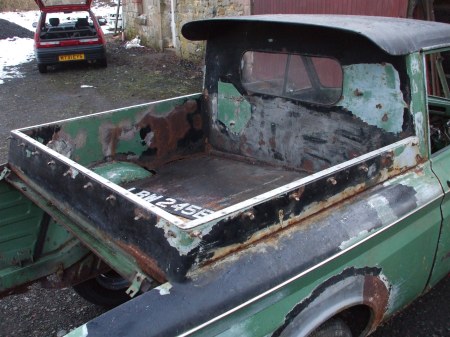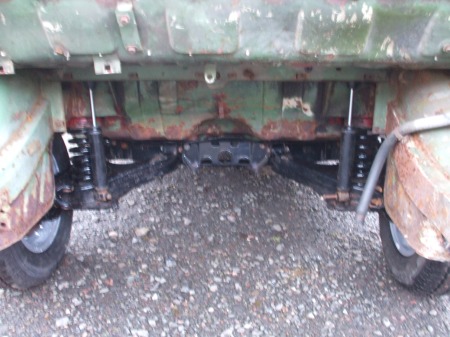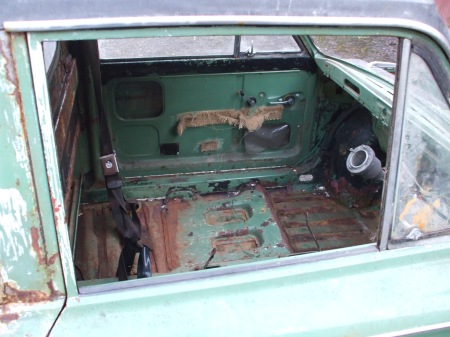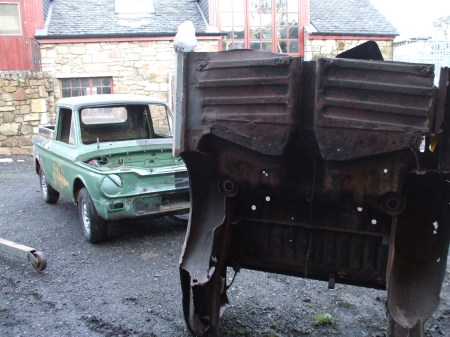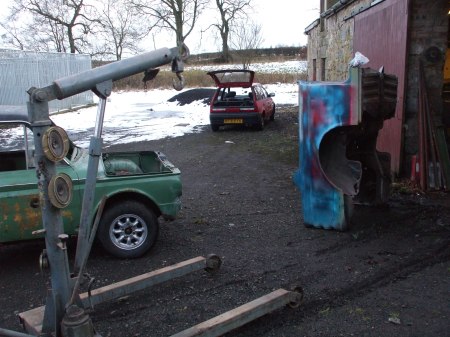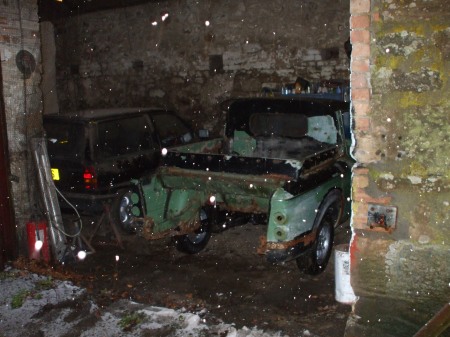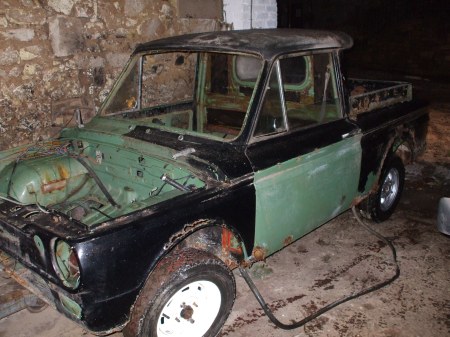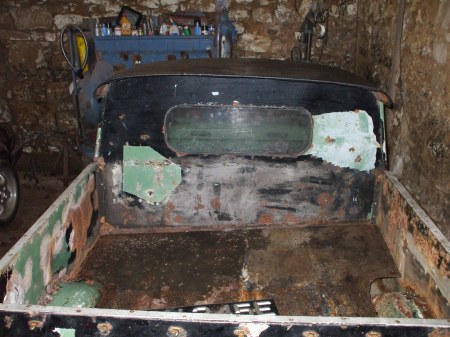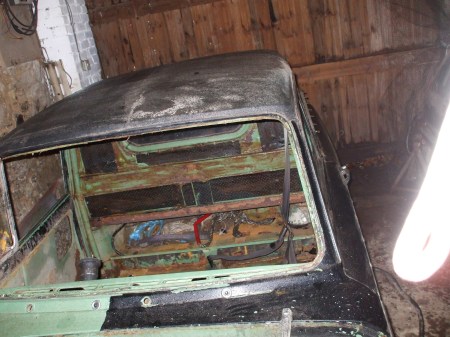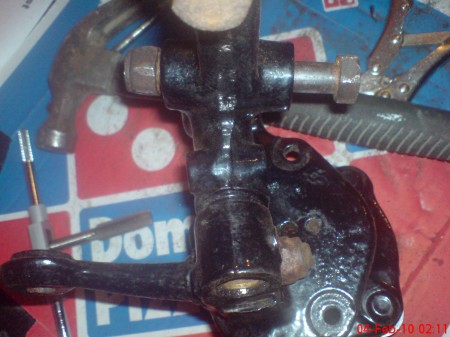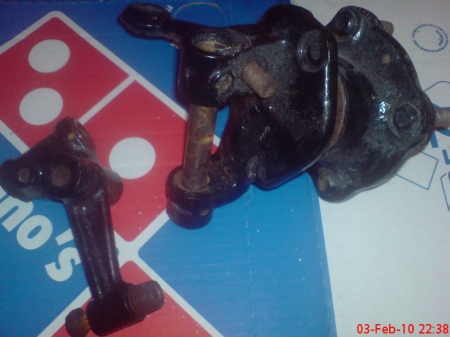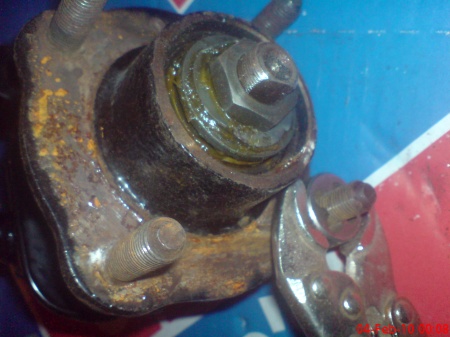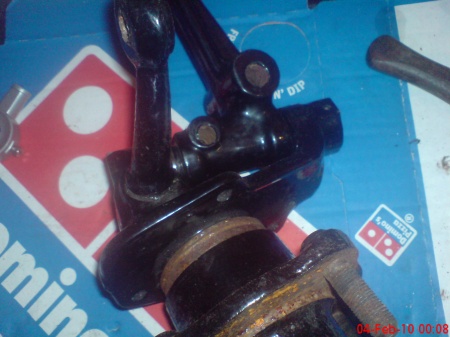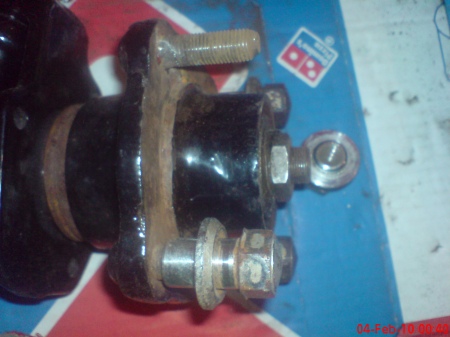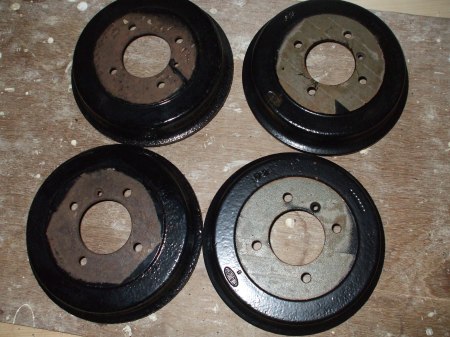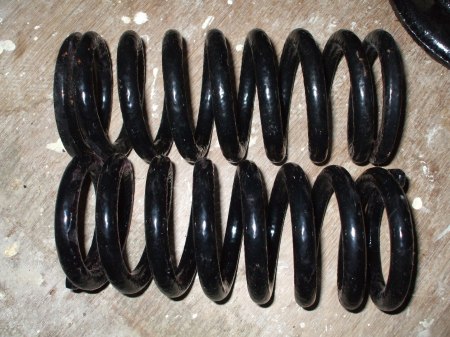Many years ago I wrote ‘ My next move was to roll the shell over onto two matresses to get at the underside. The plan was to hire a compressor and generator (I only have a 32 volt electrical supply in the lock-up), sandblast the necessary areas, weld in new metal and prime it all. This did not happen. I couldn’t find a suitable petrol driven compressor to power the sandblaster or a generator big enough for the welder. Most hire shops don’t want to know when you say it is for a welder. The manufacturers of the welder said 2.8kw would be sufficient but none of the hire shops agreed.
Plan B was to buy and adequate compressor and build a jig round the shell, then move the lot to a rented workshop and work round the clock. I’ve built the jig and bought the compressor and a spot-welder (another bank-loan) and am now waiting until I can afford to rent the work-space.
Plan C is to pay-off the current bank-loan then buy some oxy-acetylene welding gear (no power problems there) and hire a generator to power the compressor. Until then I’ll just have to be patient!‘ and that is sorta what happened. I tipped the shell over onto two matresses and if I remeber correctly it was held in that position with ropes & jacks. Shortly after I got two ‘frames’ made from angle iron, by a local fabricator, which bolted on the front and rear bumper mounts to support the shell meaning I could dispense with the matresses.
The shell has sat in that position for about 20 years and the problem now was how to tip it back again!! It was quite central in the lock-up so if you tipped it over it would hit the wall so how was I going to over come this. Also, as the frame were square it didn’t make tipping it over easy. After days of planning I set to work and it wasn’t too difficult. I hacksawed the corners off the frame and started tipping it the using a combination of piles of tyres and some ropes & chains attached to the frame gradually jacked one side up until it hit the wall. Then, by removing tyres and gradually slackening the ropes and dragging the frame by hand it slid down the wall and back onto its four feet – hooray. The pictures will give a better illustration of this.
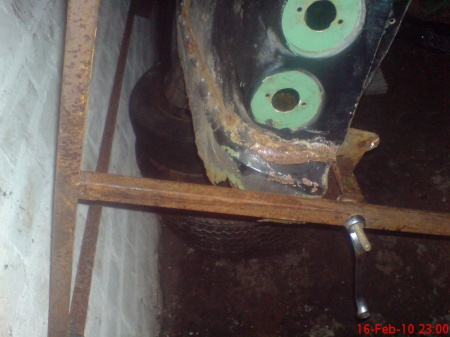
frame hits wall
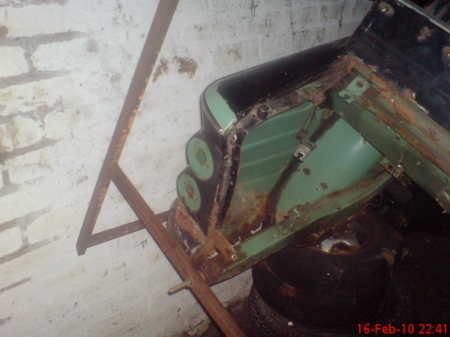
another view of frame-versus-wall situation
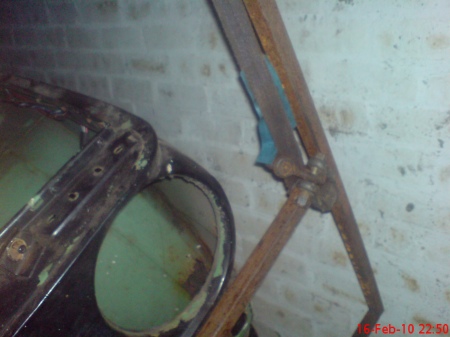
similar situation at front
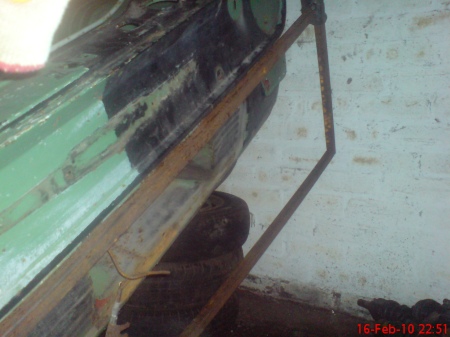
restoration effort in 1993 consisted of scraping 1980's cellulose 're-spray' off to reveal original Glenalmond Green
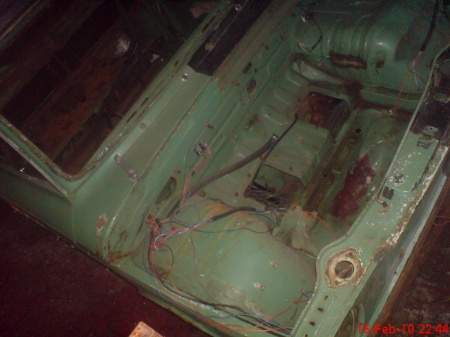
front view part way thru tipping process

shell would come down right next to wall but frame is wider so prevented this but also hekped to cushion the blow
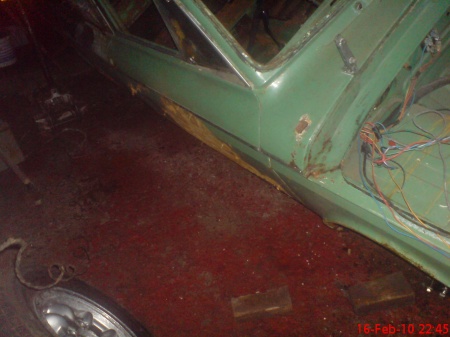
wheels left off side on grounduntil shell over far enough to get jacks in
